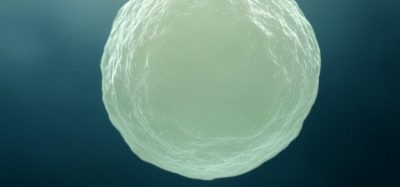Lubrication key to chocolate’s irresistibility
- Like
- Digg
- Del
- Tumblr
- VKontakte
- Buffer
- Love This
- Odnoklassniki
- Meneame
- Blogger
- Amazon
- Yahoo Mail
- Gmail
- AOL
- Newsvine
- HackerNews
- Evernote
- MySpace
- Mail.ru
- Viadeo
- Line
- Comments
- Yummly
- SMS
- Viber
- Telegram
- Subscribe
- Skype
- Facebook Messenger
- Kakao
- LiveJournal
- Yammer
- Edgar
- Fintel
- Mix
- Instapaper
- Copy Link
Posted: 13 January 2023 | Grace Galler | No comments yet
Researchers have determined that consumers find the process whereby chocolate turns from a solid to a smooth emulsion in the mouth “totally irresistible”.


A new study has analysed each step in the chocolate eating process and has pinpointed that chocolate turning from a solid to a smooth emulsion is the mouth is what consumers find “totally irresistible”.
Carried out by scientists at the University of Leeds, the researchers have said that they “hope it will lead to the development of a new generation of luxury chocolates that will have the same feel and texture but will be healthier to consume”.
According to Statista, in 2021, the chocolate confectionery market generated a revenue of approximately $0.99 trillion worldwide. But it also claims that there are no signs of its popularity dropping as, according to estimates of the Statista Digital Market Outlook, the generated revenue in this market is expected to increase, reaching a value of 1.33 trillion dollars in 2027.
The scientists that carried out the study stated that, while being in the mouth, “the chocolate sensation arises from the way the chocolate is lubricated”. This is reportedly either from ingredients in the chocolate itself, from saliva, or a combination of the two.
Researchers highlighted that fat plays a key role almost immediately when a piece of chocolate is in contact with the tongue. After that, solid cocoa particles are released and they become key in terms of the tactile sensation, thus fat deeper inside the chocolate plays a rather limited role and could be reduced without having an impact on the feel or sensation of chocolate.
“Lubrication science gives mechanistic insights into how food actually feels in the mouth. You can use that knowledge to design food with better taste, texture or health benefits,” Anwesha Sarkar, Professor of Colloids and Surfaces in the School of Food Science and Nutrition at Leeds.
“If a chocolate has five percent fat or 50 percent fat it will still form droplets in the mouth and that gives you the chocolate sensation. However, it is the location of the fat in the make-up of the chocolate which matters in each stage of lubrication, and that has been rarely researched.”
“We are showing that the fat layer needs to be on the outer layer of the chocolate, this matters the most, followed by effective coating of the cocoa particles by fat, these help to make chocolate feel so good.”
The tests were conducted using a luxury brand of dark chocolate on an artificial 3D tongue-like surface, designed at the University of Leeds. The researchers used analytical techniques from a field of engineering called tribology to conduct the study, which included in situ imaging.
Citing “tribology” as a key term, the researchers defined it as referencing how surfaces and fluids interact, the levels of friction between them and the role of lubrication: in this case, saliva or liquids from the chocolate.
The scientists reported that when chocolate is in contact with the tongue, it releases a fatty film that coats the tongue and other surfaces in the mouth. It is this fatty film that makes the chocolate feel smooth throughout the entire time it is being eaten.
“With the understanding of the physical mechanisms that happen as people eat chocolate, we believe that a next generation of chocolate can be developed that offers the feel and sensation of high-fat chocolate yet is a healthier choice,” said Dr Siavash Soltanahmadi, from the School of Food Science and Nutrition at Leeds and the lead researcher in the study, said:
“Our research opens the possibility that manufacturers can intelligently design dark chocolate to reduce the overall fat content.
“We believe dark chocolate can be produced in a gradient-layered architecture with fat covering the surface of chocolates and particles to offer the sought after self-indulging experience without adding too much fat inside the body of the chocolate.”
The researchers have also said that they believe the physical techniques used in the study could be applied to the investigation of other foodstuffs that undergo a phase change, where a substance is transformed from a solid to a liquid, such as ice-cream, margarine or cheese.
Related topics
Quality analysis & quality control (QA/QC), Research & development, The consumer, Trade & Economy, World Food








